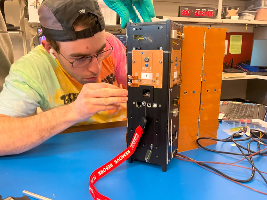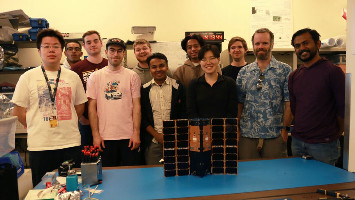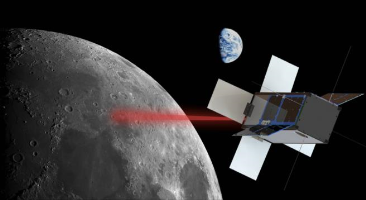| Spacecraft name | DORA (Deployable Optical Receiver Array) |
|---|---|
| Type | CubeSat |
| Units or mass | 3U |
| Status | Reentry 2024-12-03. Was operational? (Many packets with data on SatNOGS until a week before reentry as of 2024-12-16) |
| Launched | 2024-08-04 |
| NORAD ID | 61502 |
| Deployer | NRCSD (NanoRacks CubeSat Deployer) [Quad-M] |
| Launcher | Falcon 9 (Cygnus) (NG-21) (ELaNa 52) |
| Deployment | Deployed from ISS on 2024-10-09 |
| Organization | Arizona State University |
| Institution | University |
| Entity type | Academic / Education |
| Headquarters | US |
| Oneliner |
Demonstrate data rates of 1 Gbps over distances of thousands of kilometers with laser communications. |
| Description |
The Deployable Optical Receiver Aperture (DORA) mission will perform a technology demonstration of a widefield infrared laser communication terminal for small satellites. The new technology enables communication networks in cis-lunar space and new mission classes, including constellations of small satellites for scientific investigations. New optical communication technology that eliminates precision pointing accuracy requirements on the host spacecraft. The deployable optical receiver aperture (DORA) aims to demonstrate 1 Gbps data rates over distances of thousands of kilometers. DORA requires an easily accommodated host pointing accuracy of only 10 degrees with minimal stability, allowing the primary mission to continue without reorienting to communicate and/or enabling small satellite missions using low-cost off-the-shelf ADCS systems. To achieve this performance, DORA replaces the traditional receiving telescope on the spacecraft with a collection of wide-angle photodiodes that can identify the angle of arrival for incoming communication lasers and steer the onboard transmitting laser in the corresponding direction. This work is motivated by NASA’s plans for a lunar communications and navigation network and supported by NASA’s Space Technology Program (STP). It is ideally suited for crosslink communications among small spacecraft, especially for those forming a swarm and/or a constellation, and for surface to orbit communications. We will implement the deployable optical receiver aperture and miniature transmission telescope as a 1U payload in the 3U cubesat and conduct the demonstration flight in LEO. Future implementations of the DORA technology are expected to further enable omnidirectional receiving of multiple optical communications simultaneously and accommodate multiple transmitting modules on a single cubesat. |
| Notes | |
| Sources | [1] [2] [3] [4] [5] [6] |
| Photo sources | [1] [2] [3] [4] |
| Keywords | Laser transmitter |
| On the same launch |
Last modified: 2024-12-16




